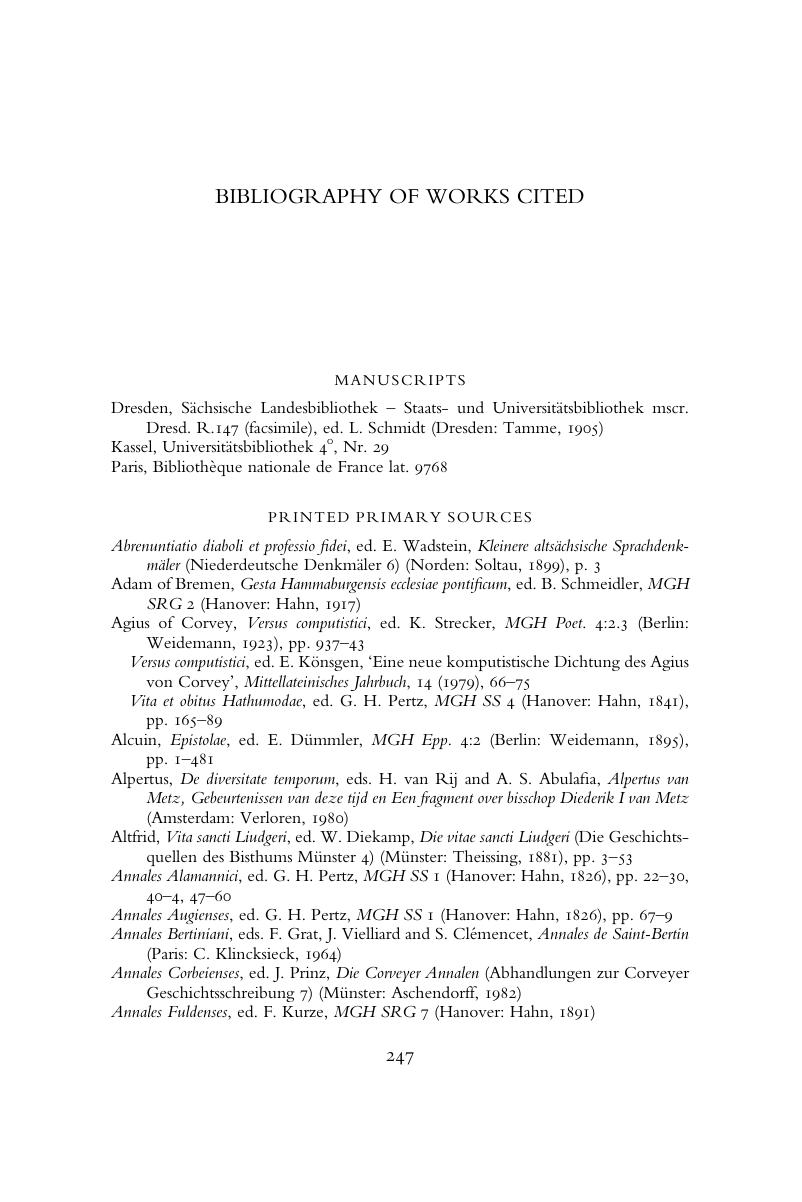Book contents
- Conquest and Christianization
- Cambridge Studies in Medieval Life and Thought Fourth Series
- Conquest and Christianization
- Copyright page
- Dedication
- Contents
- Figures
- Maps
- Acknowledgements
- Note on Translations
- Abbreviations
- Introduction
- Part I Politics of Conquest
- Part II Conversion and Christianization
- Conclusion
- Bibliography of Primary Sources in English Translation
- Bibliography of Works Cited
- Index
- References
Bibliography of Works Cited
Published online by Cambridge University Press: 01 December 2017
- Conquest and Christianization
- Cambridge Studies in Medieval Life and Thought Fourth Series
- Conquest and Christianization
- Copyright page
- Dedication
- Contents
- Figures
- Maps
- Acknowledgements
- Note on Translations
- Abbreviations
- Introduction
- Part I Politics of Conquest
- Part II Conversion and Christianization
- Conclusion
- Bibliography of Primary Sources in English Translation
- Bibliography of Works Cited
- Index
- References
Summary

- Type
- Chapter
- Information
- Conquest and ChristianizationSaxony and the Carolingian World, 772–888, pp. 247 - 273Publisher: Cambridge University PressPrint publication year: 2017



